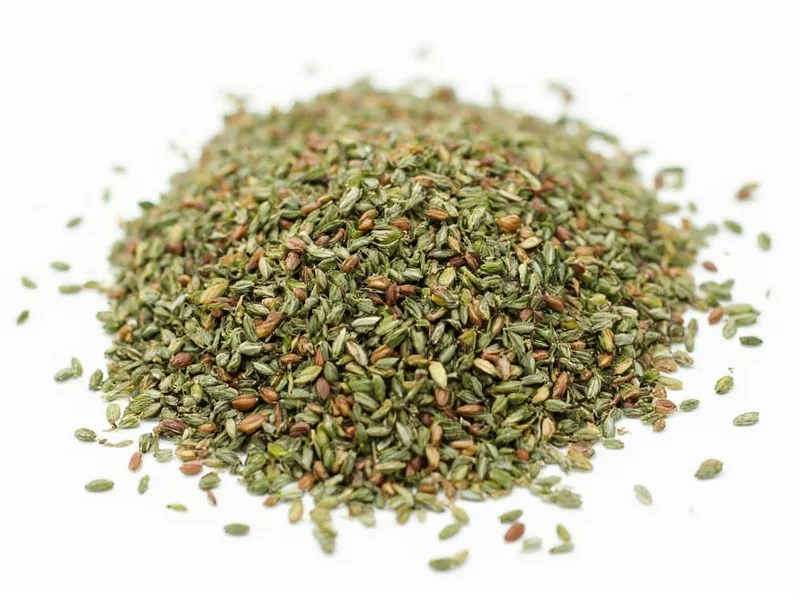Understanding herb conversions is essential for consistent cooking results. When recipes call for fresh thyme but you only have dried thyme available, knowing the proper dried thyme to fresh thyme conversion prevents over-seasoning or under-seasoning your dishes. The 3:1 ratio (fresh to dried) applies to most culinary herbs, but thyme specifically follows the 1/3 teaspoon dried = 1 teaspoon fresh measurement.
Why the 3:1 Herb Conversion Ratio Matters
Thyme loses approximately 90% of its water content during drying, concentrating its essential oils and flavor compounds. This scientific principle explains why dried thyme to fresh thyme conversion requires using less dried product. The dehydration process intensifies the herb's potency, making dried thyme significantly stronger than its fresh counterpart.
Professional chefs and experienced home cooks rely on this dried herbs vs fresh herbs ratio to maintain recipe integrity. When substituting dried thyme for fresh in cooking, remember that overestimating can easily overpower your dish, while underestimating leaves it lacking in that distinctive earthy, slightly minty thyme flavor.
Practical Application in Your Kitchen
When converting recipes that specify fresh thyme to use dried thyme instead, follow these practical steps:
- Note the fresh thyme measurement in your recipe
- Divide that amount by three (for example, 1 teaspoon becomes 1/3 teaspoon)
- Add the dried thyme early in the cooking process to allow full flavor release
- Taste and adjust seasoning before serving
For extended cooking times (like stews or braises), add dried thyme at the beginning. For quick-cooking dishes, add it in the last 15-20 minutes to preserve optimal flavor. This approach ensures perfect herb substitution whether you're making roasted meats, soups, or vegetable dishes.
Complete Herb Conversion Reference Guide
While thyme follows the standard 3:1 ratio, some herbs behave differently when dried. This comprehensive conversion chart helps with all your cooking needs:
| Herb | Fresh Measurement | Dried Measurement | Special Notes |
|---|---|---|---|
| Thyme | 1 teaspoon | 1/3 teaspoon | Standard conversion applies |
| Rosemary | 1 teaspoon | 1/4 teaspoon | More potent when dried |
| Basil | 1 tablespoon | 1 teaspoon | Fragile flavor compounds |
| Oregano | 1 teaspoon | 1/2 teaspoon | Flavor intensifies more than most |
| Parsley | 2 tablespoons | 2 teaspoons | Milder flavor when dried |
Avoiding Common Herb Substitution Mistakes
Many home cooks make critical errors when substituting dried thyme for fresh. Understanding these pitfalls ensures better cooking results:
- Not adjusting for storage time: Dried thyme loses potency over time. Herbs stored longer than 6 months may require slightly more than the standard 1/3 teaspoon dried thyme equals 1 teaspoon fresh measurement.
- Adding dried herbs too late: Unlike fresh herbs, dried thyme needs time to rehydrate and release flavors. Add it early in the cooking process for best results.
- Using improper storage: Keep dried thyme in airtight containers away from light and heat to maintain maximum potency between uses.
- Ignoring recipe context: In raw applications like salad dressings, fresh thyme works better. Reserve dried thyme for cooked dishes where its concentrated flavor can properly integrate.
Expert Tips for Perfect Herb Substitutions
Professional chefs recommend these advanced techniques when working with dried thyme instead of fresh:
- Toast dried thyme in a dry pan for 30 seconds before use to awaken essential oils and enhance flavor
- Crush between fingers when adding to dishes to release maximum flavor compounds
- Create a thyme-infused oil by steeping dried thyme in warm olive oil for 10 minutes as an alternative to direct addition
- Adjust for dish acidity - acidic ingredients like tomatoes or vinegar can mellow thyme's flavor, potentially requiring slight increases in measurement
Remember that personal taste preferences play a role in herb substitutions. While the standard dried thyme to fresh thyme conversion provides a reliable starting point, always taste your dish before final seasoning. Cooking is both science and art, and these measurements serve as guidelines rather than absolute rules.
Frequently Asked Questions
Can I use dried thyme instead of fresh in all recipes?
While you can substitute dried thyme for fresh in most cooked dishes, fresh thyme works better in raw applications like salad dressings or garnishes. For soups, stews, roasts, and sauces, dried thyme makes an excellent substitute using the 1/3 teaspoon dried = 1 teaspoon fresh ratio.
How do I adjust thyme measurements for long-cooking dishes?
For dishes that cook longer than 2 hours, use the standard 1/3 teaspoon dried thyme equals 1 teaspoon fresh measurement but add it during the first hour of cooking. The extended heat exposure will mellow the flavor slightly, so you might need to increase by 10-15% compared to shorter cooking times.
Does the quality of dried thyme affect the conversion ratio?
Yes, higher quality dried thyme that's properly stored maintains more potency. Older or poorly stored dried thyme may require using up to 50% more than the standard dried thyme to fresh thyme conversion to achieve similar flavor intensity. Always check dried herbs for strong aroma before using.
What's the best way to store dried thyme to maintain potency?
Store dried thyme in an airtight container away from light, heat, and moisture. A cool, dark cupboard works best. Properly stored, dried thyme maintains good flavor for 1-2 years. Avoid storing near the stove or oven where temperature fluctuations occur.
Can I make my own dried thyme from fresh?
Yes, you can dry fresh thyme by hanging sprigs upside down in a warm, dry, dark place for 1-2 weeks. Once completely dry and crumbly, remove leaves from stems and store in an airtight container. Homemade dried thyme typically has better flavor than store-bought and follows the standard dried thyme equals fresh conversion ratio.











 浙公网安备
33010002000092号
浙公网安备
33010002000092号 浙B2-20120091-4
浙B2-20120091-4